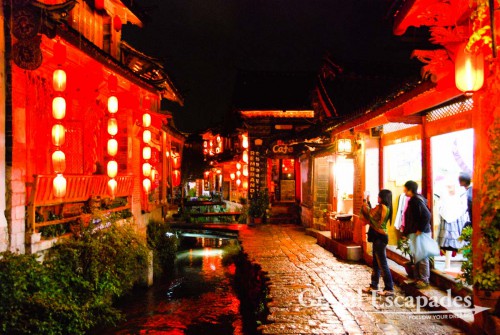
Cobble-stone streets lined with traditional Naxi architecture in the Old Town of Lijiang, Yunnan’s number one tourist destination, China
The Old Town of Lijiang is Yunnan’s number one tourist destination, famous for its Naxi architecture. The Naxi are the prominent ethnic group in the area with a very interesting history and a religion that shows their Tibetan ties. The city’s cobble-stone streets are lined with houses built in traditional Naxi style. These buildings have been tastefully restored and together with the red lantern give this area an irresistible romantic charm. The many small canals that crisscross Old Town even manage to emit a certain peacefulness, despite the hordes of Chinese tour groups that come and go in waves.
Even with the crowds, we found the city gorgeous and great fun. For those few western tourists who travel South West China: if you thought Yangshuo was touristy, you have seen nothing yet! True, there are quiet corners, further away from Old Market Square, but the narrow promenades along the tiny Yu River turn into sheer madness when night falls. There must be a mile of restaurants, bars, clubs and karaoke bars that each plays their own type of music at max. volume.
The stream of people passing by is endless. While they are drifting along, they take photos of their friends or spouses flanked by some of the numerous girls in glittery traditional dresses, whose job it is to bring in customers. The later the evening, the less concerned these teenagers are about their mission – the places are packed anyway – but move to the rhythm of the loud thumping that comes from inside. Some bars had people dressed in traditional costumes dancing to deafening disco music. Others had groups that moved to what was obviously traditional music, again at a clear hazardous decibel level.
Two places managed to be even unique in this orgy of noise. One was a karaoke bar, where a confident woman shrieked into the microphone, while some guests loudly banged on the table. Unfamiliar with this ambience, it was not clear to us whether they disapproved or showed their delight. The other one was a bar were three African drummers got a young crowd so worked up that they frenetically hit some drums with wooden pedals and repeated, like a chorus, the African (???) chants the drummers were singing. Some of these youngsters seemed almost bewitched.
We were glad that our hostel, Dongba Hotel, was at the other end of Old Town. Not that too many residents would be troubled by the noise anyway, because very few locals still live there! The rents are astronomically high and those who owned property rent it or sold it to businesses people. For awhile, the local government even paid residents to remain living in the Old Town, in vain. Now, it decided to give out no more licenses to prevent Old Town from sprawling further and further.
Maybe in this current situation is it worth mentioning that these old Naxi houses resisted the 7.0 earthquake in 1996. The government rebuilt Lijiang County based on the principle of Naxi architecture, mainly using wood instead of cement.
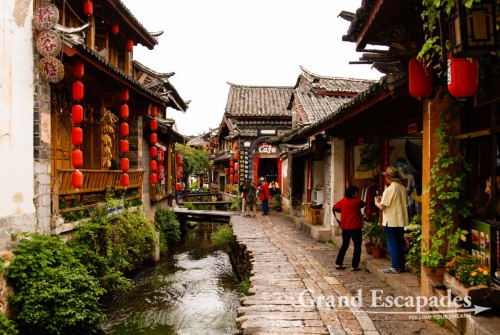
Cobble-stone streets lined with traditional Naxi architecture in the Old Town of Lijiang, Yunnan’s number one tourist destination, China
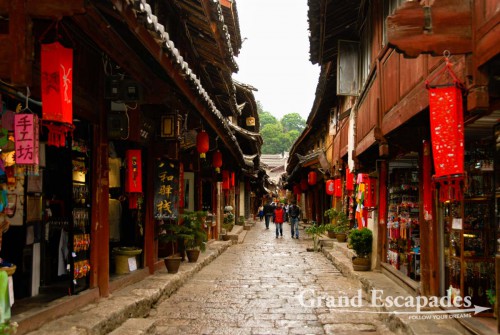
Cobble-stone streets lined with traditional Naxi architecture in the Old Town of Lijiang, Yunnan’s number one tourist destination, China
Nevertheless, believe it or not, there is a quiet side to this popular tourist destination! One is a walk around the “Looking at the Past Pavilion” on the green hill in the center of town, actually the one separating old and new town. From the top of the pavilion, you have a great view of the city and the surroundings. While we were up there, the clouds tore open and let us have a glimpse of the nearby snow-covered mountains. In case we have not mentioned it yet, this was the first day since we arrived in Asia that we saw the sky!

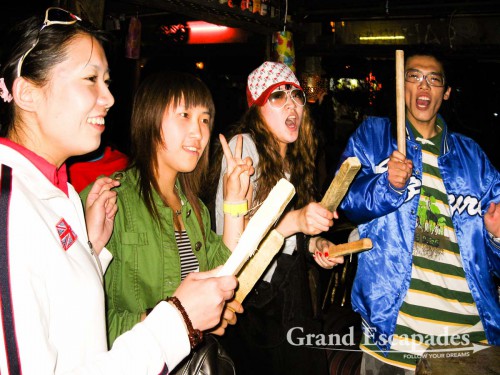
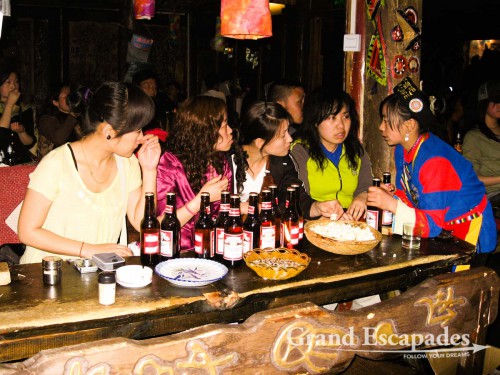
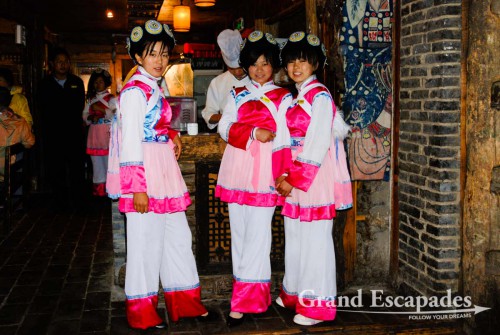
No comments yet.